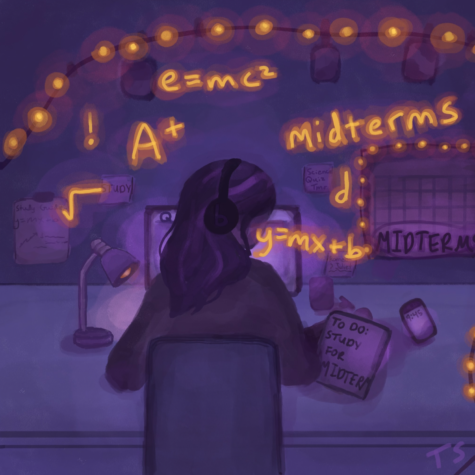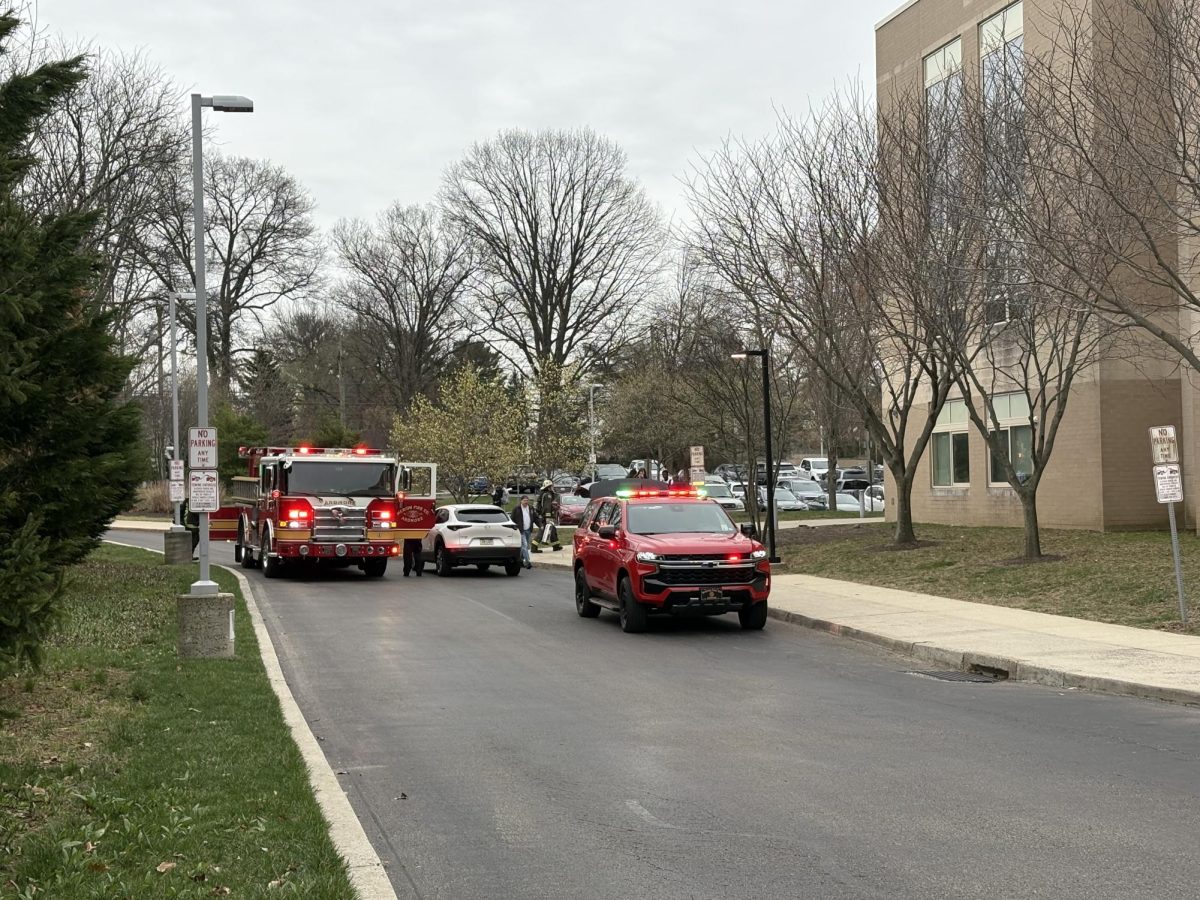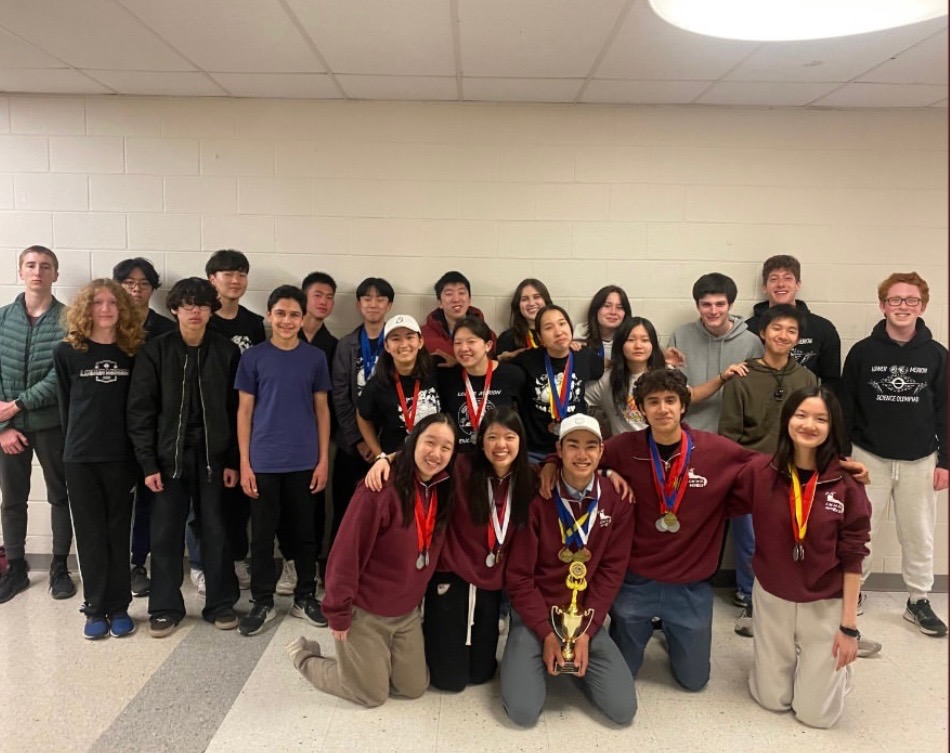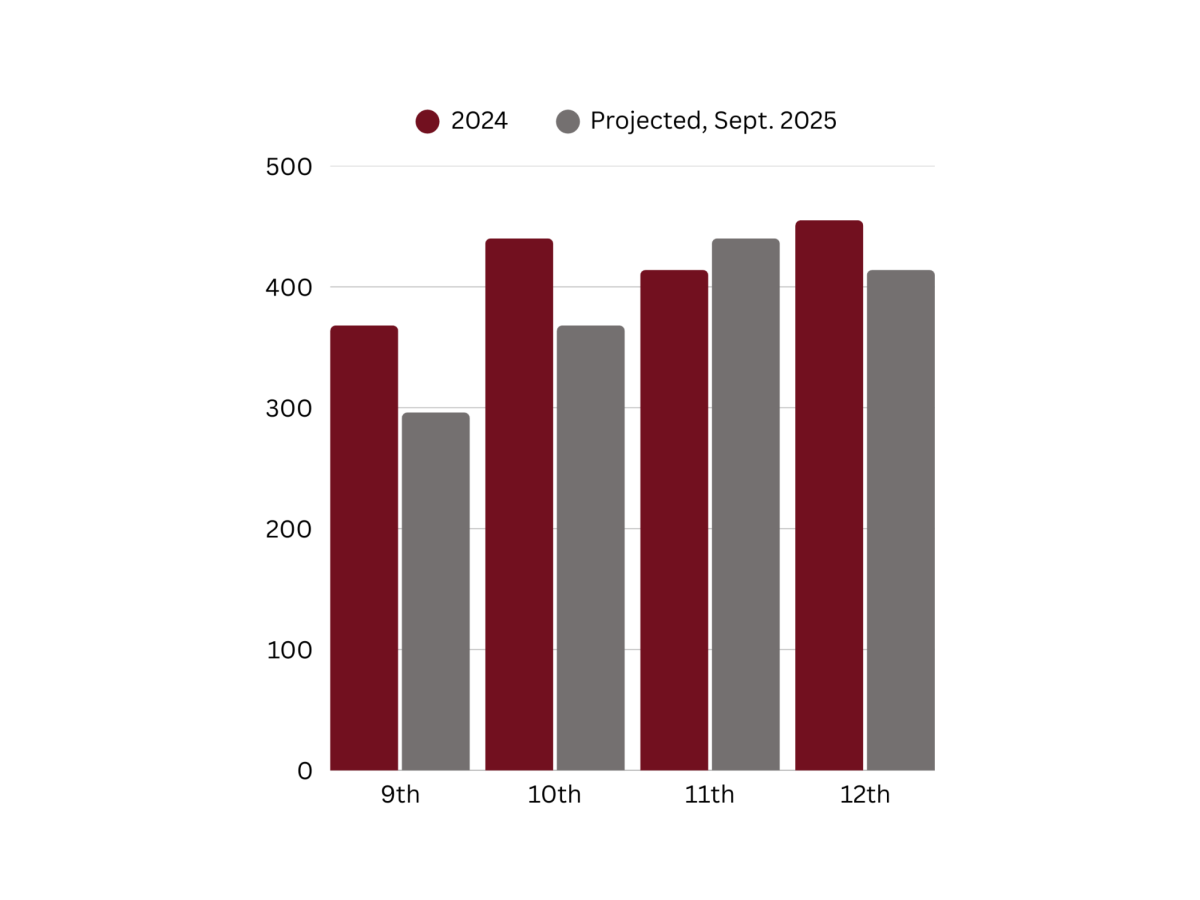
As the first half of the 2021-2022 school year comes to a close, and the second semester commences, there is one event students and teachers have anxiously awaited: midterm week. However, with the many changes in our world and school, it is fitting that midterm week has also undergone its own transformations. The 2022 end-of-the-semester week has developed a new purpose, and both teachers and students possess differing views on midterms and how to approach them in our advancing world.
The traditional midterm week of LM’s past is gone, and instead, students and teachers experienced firsthand the revised ending to the first semester. Principal Jim Scanlon explains, “we are restructuring our traditional mid-term schedule to provide what we feel will be a more holistic way to assess student progress for the first half of the school year. Instead of taking written midterm tests each morning, our students will be participating in a variety of assessments, including projects, presentations, writing conferences, along with some traditional written tests.” He also details, “this approach is being done, in part to help reduce anxiety for students about assessments, and use the time to prepare for the second half of the school year.” During the 2020-2021 school year, midterms were canceled due to COVID-19. Since the pandemic continues to affect daily school activities, midterm week was not initially included in this year’s calendar. As described by Scanlon, however, faculty and staff have worked diligently to create a less stressful version of midterm week that concurs with new progress tracking tactics. Additionally, LM’s midterms will no longer solely focus on assessing students’ cumulative knowledge, but also aim to support students’ mental health and provide time for teachers to prepare for the second half of the year.
A new vision for ending the semester has also sparked teachers to act in accordance with progressive testing techniques. For instance, many teachers formulated their own unique versions of midyear check-ins. Rather than assigning written assessments, teachers organized science labs, essays, research projects, discussions, oral exams, and some even used their allotted time to simply meet with students and provide extra practice. Others, such as in the math and history department, have opted to give more formal unit tests and midterm examinations. Still, teachers realize that it is important to modify evaluation methods to fit modern society. Art teacher Russ Loue mentions, “I love blocks of time where students can demonstrate what they know and can do through making things. Hands-on projects. So I love midterm week for that. Not for the tests and testing, but for the check-ins and making stuff.” Thanks to the work of teachers and administrators, new evaluation efforts came to fruition during this year’s midterm week.
While midterms have been modified to reduce the emphasis put on a single exam, students nevertheless anxiously anticipated the several days of various assessments and check-ins. When asked about the different types of midterms they were assigned, most students seemed to have an even combination of formal tests, labs, projects, and discussions. However, most also agreed that there was definitely a feeling of tension leading up to midterm week, and stress due to the levels of studying required for each class. This was especially true for freshmen and sophomores, who explained that their stress stemmed from a lack of experience with having projects and tests for each subject in a single week. Additionally, while stress was prevalent, most students expressed appreciation for the week of half days that came with midterms, and many even acknowledged the important experience gained from midterm week. For instance, Natalie Chen ’24 stated, “I think it is important for students to go over all the material learned so far in the year like in math classes or sciences, but maybe there could be a less stressful approach like projects that connect all the information we learn at the end of the year.” LM students definitely developed mixed feelings on midterms but are willing to improve the end-of-semester week for years to come with their valuable suggestions.
This year’s midterm week included 4 days of half-day schedules. Students attended two of their classes, starting with sets one and two on Tuesday and ending with sets seven and eight on Friday. After all of their hour-and-a-half classes ended, students could choose to stay in the building for extra help and a quiet place to work, or go home for relaxation and studying time. With the changes made to this year’s midterm week, student and teacher feedback will be essential. Scanlon details, “we will be asking for feedback from students and staff once this week is concluded to determine what works well, and what doesn’t.” After a hectic, tough first semester, midterms provided students with an opportunity to take a break from the normal school schedule, reflect on their learning, and prepare for a successful second semester.







